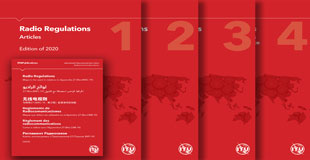About
Small satellite technology has become an increasingly powerful tool, supporting multiple missions, functions, and capabilities. The versatility of small satellites – generally those weighing under 500 kilogrammes – has made them essential to provide seamless and reliable communication services worldwide.
The new Handbook on Small Satellites from the International Telecommunication Union (ITU) offers insights and guidance on design, launch and operation in this rapidly advancing segment of the space industry.
The publication originated with Resolution ITU-R 68, a decision taken in 2015 by ITU’s Radiocommunication Assembly, responsible for studies in the ITU Radiocommunication Sector (ITU-R). The satellite services expert group for efficient orbit and spectrum utilization – Working Party 4A in ITU-R Study Group 4 – then developed the handbook to explain global regulatory procedures for small satellites, including even smaller nanosatellites and picosatellites.
Backgrounders

High-Altitude Platform Systems (HAPS)

ITU Study Groups

ITU-R: Managing the radio-frequency spectrum for the world

Satellite issues:
Earth stations in motion (ESIM)

Satellite issues:
Non-GSO FSS satellite systems

Satellite issues:
Small SATS: Nano and Pico – short duration missions

Regulation of Satellite Systems


